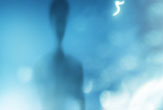Horror Movies: Why People Love Them

This Behind the Scenes article was provided to LiveScience in partnership with the National Science Foundation.
This time of year, screens big and small entertain our basest instincts with horrifying gore, monsters, insanity and the supernatural. Although considered a mostly niche genre, horror films enjoy an avid following and rake in plenty of bucks at the box office.
Yet, as horror buffs come down from their Halloween rush, many are ready to do it again. Being scared out of their wits, it seems, is fun. Audiences get another chance this weekend as the "based-on-true-events" alien-abduction thriller "The Fourth Kind" (Universal) opens nationwide.
"Every scene in this movie is supported by archival footage. Some of what you are about to see is extremely disturbing," says Dr. Abigail Tyler, who is played by Milla Jovovich.
The question is: Why? If our best selves find the horrific so repulsive, why do we pay good money to watch it again and again?
Desired effect
It's not merely an attraction to blood and gore, experts say. People who liked the "Saw" series, for instance, wouldn’t necessarily derive such pleasure from watching a steer being slaughtered in a meat-processing plant. Researchers say one reason we watch is because the thrill calls up primal behavior, mainly in males, to assess threat levels. (The typical horror-flick viewer is a male adolescent between the ages of 15 and 45.)
Get the world’s most fascinating discoveries delivered straight to your inbox.
"People go to horror films because they want to be frightened or they wouldn't do it twice," says Jeffrey Goldstein, a professor of social and organizational psychology at the University of Utrecht in the Netherlands. Goldstein edited a book on the subject titled, "Why We Watch: The Attractions of Violent Entertainment" (Oxford University Press).
"You choose your entertainment because you want it to affect you. That's certainly true of people who go to entertainment products like horror films that have big effects. They want those effects," Goldstein said.
He and other social scientists suggest we watch for different reasons, which include enjoying the adrenaline rush, being distracted from mundane life, vicariously thumbing our noses at social norms, and enjoying a voyeuristic glimpse of the horrific from a safe distance.
Just plain suspense
Among the recent slate of genre films, "Paranormal Activity" (Paramount) has enjoyed superlative acclaim as the "best horror movie ever" not only for its unknown filmmaker and impossibly low ($15,000) production cost — but because it has racked up more than $85 million since the movie’s opening in late September. Paranormal remains a strong second-place money maker even as Michael Jackson's "This is It" knocked it from its five-week perch.
Regularly likened to "The Blair Witch Project" for its one-camera documentary style, "Paranormal" is about a young couple, Katie and Micah, who enlist audio-visual equipment to record unexplained things-that-go-bump-in-the-nights spent in their newly purchased home. Bumpy to near-nauseating at times, the shooting was done in seven days in 2006 with a crew of three at writer-director Oren Peli’s San Diego house.
With hardly a drop of blood, suspense builds as the demon (not ghost) makes its malevolence known through increasingly threatening acts the couple witness directly and on video replays. Eventually, things get personal between Micah and the demon despite pleas from Katie and Do Not Disturb warnings from a psychic.
The ending, which was changed from the original at the suggestion of Steven Spielberg, is worth the 86 minutes of nail biting. In an off-handed way, it does what Goldstein says horror films must: provide a just resolution in the end. The bad guy gets it.
"Even though they choose to watch these things, the images are still disturbing for many people," said Goldstein. "But people have the ability to pay attention as much or as little as they care to in order to control what effect it has on them, emotionally and otherwise."
In your brain
New York University neuroscientist Joseph LeDoux has mapped out neuron by neuron how the brain's fear system works. He says the complex human brain with its enormous capacity for thinking, reasoning, and just plain musing, allows us to worry in ways other animals can't.
That is, fear is not merely a biological reaction, but an emotion derived from both deep-seeded evolutionary factors as well as newly learned cautions. Conversations between the brain’s primitive amygdala and the more recently acquired cortex allow humans to interpret an environmental event and respond with an emotion such as fear.
Scary movies can play on this, LeDouz says, "If you have a good imagination, you can connect to your hardwired fears simply by thinking about a scary situation."
So far, though, the amygdala has the upper hand in the fear response. "This may explain why, once an emotion is aroused, it is so hard for us to turn it off," he says. If we like that sort of thing, it may account for why we’re so eager to turn it back on again. According to the Hollywood Reporter, Viacom CEO Philippe Dauman said on Tuesday the studio is planning a sequel to Paranormal.
Joseph LeDoux's work is funded by the National Science Foundation and other federal agencies.
See the Behind the Scenes Archive.


